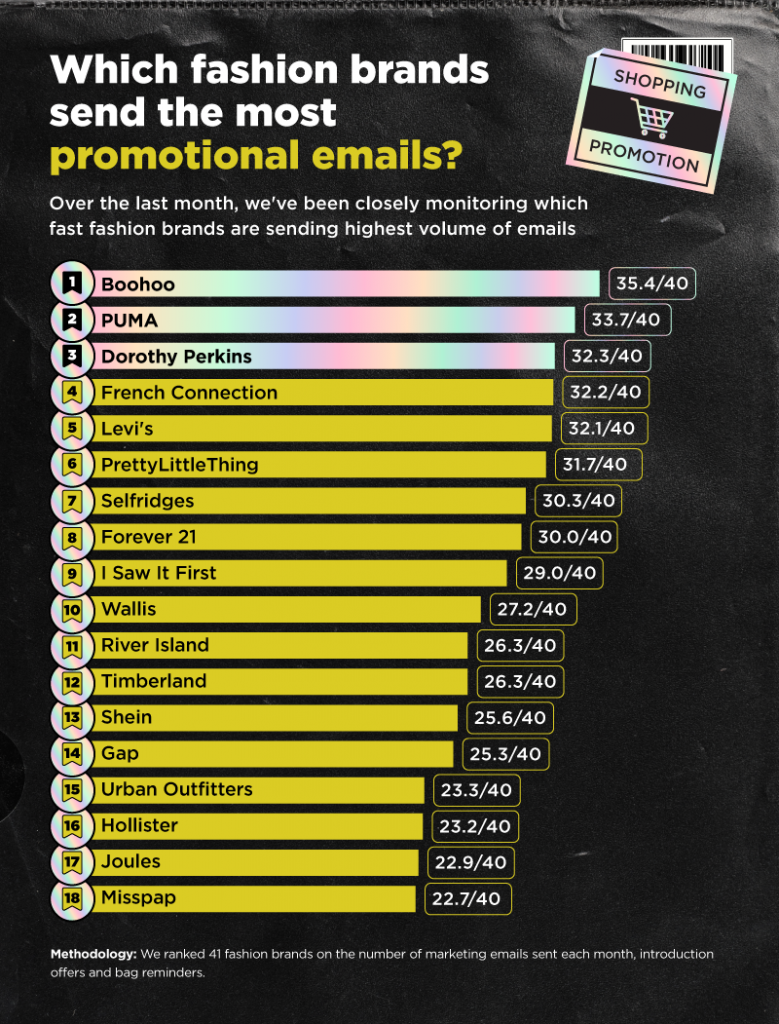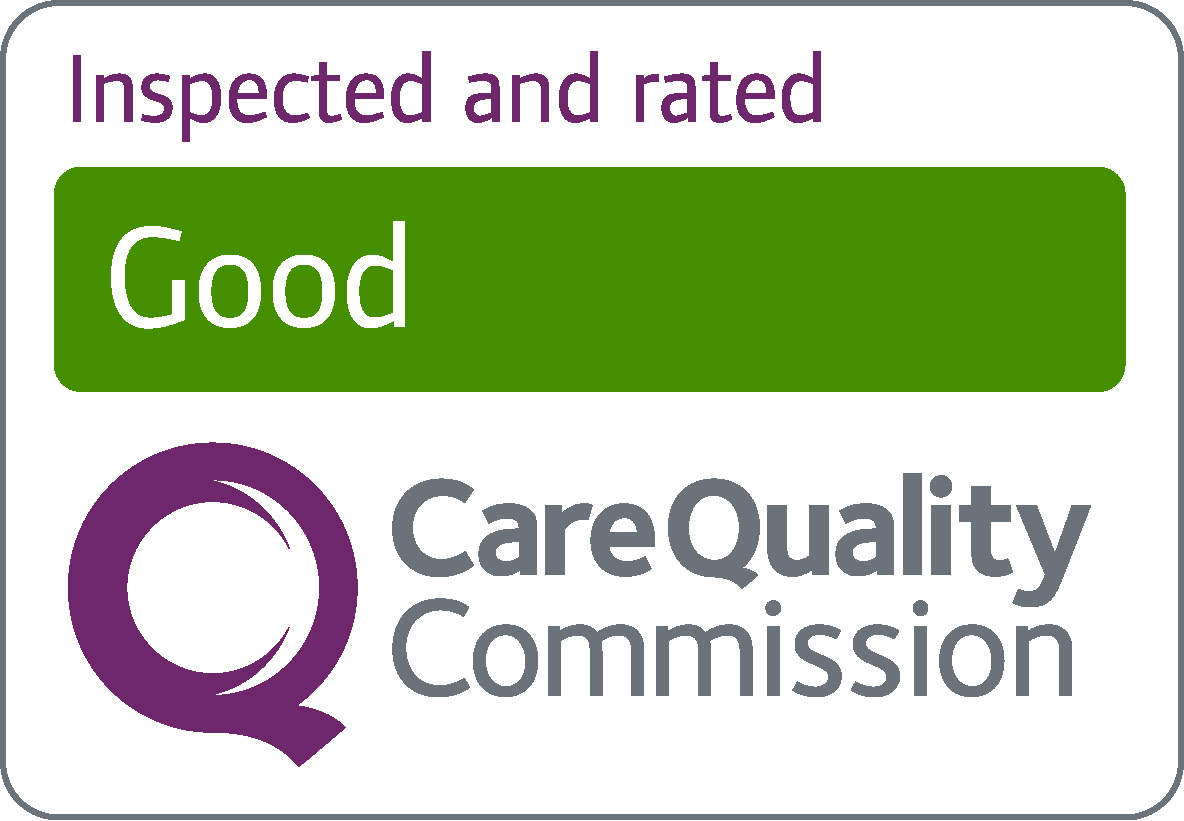How Online Retailers are Fuelling the UK’s Shopping Addiction

on 10 Jan 2022

With Black Friday sales surging to record-breaking numbers once again in the UK, it’s clear that the country’s obsession with shopping is as prevalent as it has ever been – and it’s not going away anytime soon.
Whether we’re looking for the latest gadgets, the fanciest new food trends, a chic new outfit or a bespoke piece of furniture, we have all probably felt the urge to splurge now and again.
Our constant desire to spend should come as little surprise, given that we are constantly bombarded with online, print and media advertisements that encourage us to shop until we drop.
If your urge to shop becomes uncontrollable and you find that your shopping habits are causing you to spend beyond your means on items that you do not need, then this might be a sign that you have developed a shopping addiction.
Shopping addiction is a medically recognised condition and can be just as damaging as gambling addiction or alcoholism, with the individuals struggling, putting themselves at risk of massive debts of emotional stress.
Our research team here at Delamere have crunched the numbers to uncover which online retailers send out the most marketing emails per month and therefore contribute the most to our country’s compulsive buying behaviour.
Which sectors are sending the most promotional emails?

Addiction and mental health specialist, Dr Catherine Carney:
“Addictions are medical conditions that can negatively affect both the body and the brain. For most addicts, their dependency is caused by an intense, but brief dopamine hit that is triggered by doing, using or taking the thing that they are addicted to. The term addiction is defined by the total lack of control that an individual has over the object of their addiction.
“A shopping addiction occurs when an individual begins to shop compulsively, and purchases things that they don’t need in order to experience a quick rush. This mental ‘high’ is usually all too quickly followed by feelings of guilt or shame.
“To be addicted to something means that not having access to that thing causes withdrawal symptoms. A combination of this unpleasant feeling with the addict’s lack of control regarding their dependency means that often this cycle of chasing the ‘high’ only repeats itself and often intensifies.
“A shopping addiction can manifest in many forms, and different individuals can develop different habits. From trophy shopaholics who are always on the hunt for the perfect item to compulsive shopaholics who use shopping as stress relief, and bargain seekers who purchase unnecessary items just because they are on sale. Each type of shopping addiction is equally harmful to the mental health and the financial security of the individual suffering and in some cases, can be harmful to the addict’s friends and family too”.
Founder & Chief Executive Martin Preston:
“With many of us relying on Black Friday to treat ourselves or to get discounts on our Christmas shopping, the British public have eagerly got behind the major shopping event.
“However, the Black Friday sales aren’t beneficial to everybody, and with some brands operating the event over a period of up to a few weeks, many people are prone to overspending. This is especially true for people with addictive personalities, since spending is so encouraged over this period, shopping addictions may be likely to develop.
“It can be difficult for people to resist the constant offers on discounted items and perfect gift opportunities that are advertised over the Black Friday and Christmas periods. For people, these sales often serve as a false justification for their harmful spending habits”.
Which online retailers are sending the most promotional offers?

Email marketing is a proven method that retail businesses use to build relationships with potential customers, current customers and even past customers. The technique is successful as it gives brands the chance to speak directly to prospective customers at a time that is suitable for them. By that logic, brands that send out a higher volume of promotional and marketing emails are setting themselves up for a higher volume of customers.
The online retailer with the highest volume of marketing emails per month is Look Fantastic, as the luxury beauty and cosmetics specialist received nearly full marks with a score of 38.3 out of 40. Research reveals that Look Fantastic fills up their customers’ inboxes with a welcome email, first-day introductory offer, an average of 69 marketing emails and basket reminders per month.
The race for second place was close with online cosmetics retailer Elf claiming the silver medal with a score of 35.5 out of 40. The online fashion brand, Boohoo scored similarly with 33.4 out of 40, to place third. Like Look Fantastic, Elf and Boohoo send their customers a welcome email and an introductory offer, but only send a monthly average of 47 (Elf) and 46 (Boohoo) marketing emails respectively.
The data displays that there is not one specific sector is responsible for the surge in online shopping, for example, sports brand Puma and cosmetics brand Look Fantastic each scored highly despite presumably expecting different clientele.
Surprisingly, fifteen popular online retailers received scores of 30 or more out of 40, which indicates a minimum 75% commitment from some of the most popular online retailers to target consumers. From Forever 21 to French Connection and PrettyLittleThing, the data suggests that practically all of the popular online retailers are filling their consumer’s inboxes full of promotional emails in the lead up to Christmas.
Founder & Chief Executive Martin Preston:
“As our shopping habits have moved online, it has become easier for brands from such a wide range of industries to target prospective customers. This shift from the high street to the world wide web has given such brands an opportunity to advertise to consumers beyond regular daytime operating hours, and with some users needing to register accounts, it means that these adverts can be personalised too.”
“The wider spread of online shopping, and the increase in prospective customers, means that there is no longer just one specific audience being targeted. The knock-on effect of this online shopping urge is that more people are at risk of developing a shopping addiction, as personalised adverts have less trouble finding their way into customers’ inboxes and the actual act of purchasing has become a far quicker and smoother process”.
Which fashion brands are sending the most promotional emails?

Research reveals that the fashion brand firing the most promotional emails is Boohoo. The online fashion brand received an overall score of 35.5 out of 40, for the high volume (46) of marketing emails and bag reminders emailed out to customers each month.
Followingly closely in second place is sportswear brand Puma with an overall score of 33.7. Puma provided their customers with a welcome email and an introductory offer, followed up by an average of 33 emails per month plus first and second email reminders.
The third and fourth spots are taken up by recognisable high street brands, Dorothy Perkins and French Connection, with overall scores of 32.3 and 32.2 respectively. Both of these fashion brands filled their customer’s inboxes with a welcome email and an introductory offer, however, Dorothy Perkins scored a minute 0.1 higher due to the 22 monthly marketing emails they sent out compared to French Connection’s volume of 21 emails per month.
Four more brands received scores of over 30 or more out of 40, including Levi’s (32.1), PrettyLittleThing (31.7), Selfridges (30.3) and Forever21 (30). Each one of these brands emailed its customers with a welcome message and an introductory offer. Between these brands, a total of 125 promotional emails were sent out to customers per month, with 82 of them coming from Forever21. Although the Los Angeles based fashion retailer, Forever 21 were one of the few high scoring fashion brands that did not send out first or second email reminders to customers.
Founder & Chief Executive Martin Preston:
“The fashion industry makes a big contribution to the country’s shopping addiction, and it is evidently aided by email marketing methods which massively increase their customer base.
“The alarmingly high rate at which the fashion industry in particular spams their subscribers with promotional emails suggests that the industry in its current state values product quantity over quality. The demand for a flurry of frequent sales demonstrates how fast fashion may even rely on shopping addiction to maximise profit.
“The fashion industry fuels our shopping addiction so effectively because, despite having a tendency to target products at women, it has no bias in terms of sales and can target men and even children just as easily. Clothes are an essential item that every type of person needs, where the fashion industry is effective is equating this need with our wants and desires by justifying our excessive fashion purchases with special offers and deals”.
Top 10 beauty brands sending the most promotional emails

The top beauty brand sending the most promotional emails is Look Fantastic, which received a huge score of 38.3 out of 40. Other high ranking beauty brands include Elf, claiming second place with a 35.5 score, plus make-up masters Charlotte Tilbury (33.6) and cosmetics connoisseurs Barry M (32.2) who are both London based and placed third and fourth respectively.
While the highest-scoring beauty brands, Look Fantastic and Elf noticeably outscore the highest-scoring fashion brands, Boohoo and Puma for the overall volume of monthly marketing emails, the average scoring of beauty brands is generally lower than that of fashion brands. The top ten fashion brands scored 22.3 out of 40 on average, compared to the top ten beauty brands which average out at 20.1.
The average scoring of beauty brands is lowered by brands such as Clarins and MakeUp Revolution, each receiving overall scores of just over 50% with 20.9 out of 40, as well as NARS which received a low score of just 16.9. Each of these brands drop a welcome email and an introductory offer into customers’ inboxes, but that is only followed up with a monthly average of 11 marketing emails.
While NARS does send its customers a welcome email, it does not send out an accompanying welcome offer. An average of 18 marketing emails are sent out each month – a minuscule figure compared to other beauty brands like Look Fantastic (69 monthly emails) and pop sensation Rihanna’s very own Fenty Beauty (50 monthly emails).
Founder & Chief Executive Martin Preston:
“While the beauty industry has revealed itself to be reliant on email marketing, there is a split in the sector between certain brands that use the technique heavily and others that are more willing to hold off. There may be a number of reasons for this trend, one of which being that certain brands desire a customer base that values exclusivity.
“The social norms surrounding fashion greatly differ from beauty. There is a certain stigma attached to fashion, stirred up in part by social media influence, that encourages people to not wear the same outfit on multiple occasions. This stigma is not as present in the beauty industry with reusability being the main selling point on many makeup products. This factor may account for the beauty industry’s limited use of the email marketing technique in comparison to the fashion industry.
“In the modern-day, it has become increasingly normal for beauty products to be aimed at men, however, it is undeniable that the beauty industry still predominantly targeted at women. A side effect of this is that women may actually be more at risk of developing a shopping addiction”.
Which interior & home brands are sending the most promotional offers

The average score for the volume of monthly marketing emails received by home and interior brands is 15.3 out of 40. Despite this figure is smaller than the one received by fashion brands (22.3) and beauty brands (20.1), it is still a considerably significant contribution.
The highest scoring interior and home brand is Amara with an overall score of 27.4 out of 40. Amara, which specialises in furniture and decorative accessories, filled their customer’s inboxes with a welcome email and an introductory offer, alongside a monthly average of 23 promotional emails. By comparison, that is the same monthly volume of emails as popular fashion brands like The North Face and H&M, but a whole 59 emails less than that of high scoring fashion brand Forever 21 (82 monthly emails).
Amara is closely followed by interior and home brands Bombinate and Made.com, as they tie
for second place with a score of 27.1 out of 40 each. Bombinate and Made.com scored equal, with each brand sending out a welcome email, an introductory offer plus an average of 20 monthly marketing emails.
Other interior and home brands found to be sending high levels of promotional emails include BHS, which takes fourth place with a score of 26.0, and Swoon which places fifth with a score of 22.8. While Swoon does deliver more marketing emails than BHS per month (26 compared to 12), BHS’ higher overall score is down to the introductory offer that they drop into their customer’s inboxes, which Swoon does not deliver.
Fans of Swedish furniture giants Ikea will be pleased to know that the brand received low scores for the general volume of their marketing emails, with an overall score of just 10.5 out of 40, placing it tenth in the list of home and interior brands – meaning minimum meatballs in your mailbox. The interior and home brands Peach & Parrow and Wayfair also scored lowly with scores of 10.6 and 15.6 respectively.
Founder & Chief Executive Martin Preston:
“The increase in online shopping has benefitted all kinds of businesses, not least those in the interior and home industry. These types of brands tend to sell products that are large in size and often tailored to more specific needs, making them generally less accessible to the average high street customer. Moving online has helped these brands put their products in the new online shop window, also known as your email inbox.
“Interior and home brands sell products that are seen as both less every day, less luxurious and often more expensive than the products being sold by other industries such as fashion and beauty. It is therefore understandable as to why these sorts of brands do not do as much marketing outreaching by comparison.
“However this industry still does adopt the technique and contributes significantly to fueling shopping addiction. This speaks volumes about the role that that email marketing plays in terms of brand success when even industries that do not depend on quantity sales are using the technique to succeed in an increasingly digital marketplace.
Methodology:
Taking a seed list of popular UK fashion, beauty, home & interior and technology brands we have determined which are promoting compulsive shopping behaviour based on;
- The number of monthly emails
- Introductory email
- First-day Introductory offer
- Bag reminder
Each factor was given a score out of the possible 10. Each brand could score a potential 40.

About the author: Mike Delaney
Mike crafted our innovative and person centred approach to addiction treatment. Mike’s experience in the addiction treatment sector encompasses his work as a nurse, psychotherapist and Chief Executive.
RECENT POSTS
The Power of Reaching out a HandFrom sobriety to quality of life: Revisiting recovery outcome measures
The role of alcohol in UK culture, and how to break free
Holistic diet tips to balance energy and mood
CATEGORIES
-
Addiction Recovery
Addiction Reports
Alcohol Addiction
Burnout
Delamere
Digital Addiction
Drug Addiction
Holistic Programmes
Other Behaviours
Prescription Drug Addiction
Rehab
ARCHIVES
- December 2025
- November 2025
- October 2025
- September 2025
- August 2025
- July 2025
- June 2025
- May 2025
- April 2025
- March 2025
- February 2025
- January 2025






